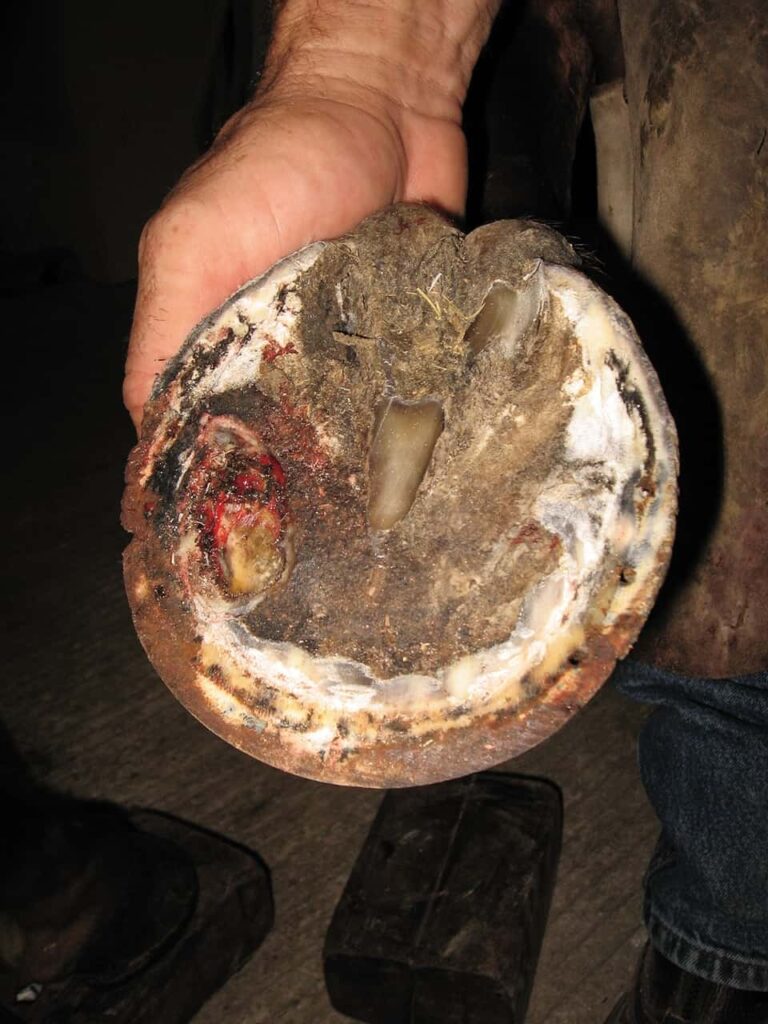
Why cleaning hooves is important
- Removes rocks, mud, and debris that can cause discomfort or bruising.
- Helps prevent thrush and infections by removing manure and moisture.
- Allows you to check for cracks, abscesses, or loose shoes early.
What you need

- Hoof pick (preferably with a brush)
- A calm environment and halter with a lead rope
Step-by-step process
1️⃣ Tie your horse safely (or have someone hold it).
Ensure it is standing on a flat, dry surface.
2️⃣ Stand beside the leg, facing the tail for hind legs, facing the head for front legs, keeping your body close for safety.
3️⃣ Ask for the hoof: Run your hand down the leg and gently squeeze the fetlock or lean into the shoulder/hip to encourage lifting.
4️⃣ Support the hoof: Hold it securely but gently, resting it on your thigh if needed for stability.
5️⃣ Use the hoof pick:

- Start at the heel, working toward the toe.
- Avoid digging hard into the frog (the V-shaped structure in the center).
- Remove all dirt, small stones, and manure.
6️⃣ Brush off remaining debris with the brush side.
7️⃣ Check the hoof for:
- Rocks or sharp objects lodged in the sole.
- Odor or black discharge (signs of thrush).
- Cracks or heat (signs of infection or laminitis).
- Loose shoes if your horse is shod.
8️⃣ Gently set the hoof down when finished.
Frequency
🗓️ Clean your horse’s hooves daily, especially before and after riding, and check them again if your horse has been in muddy areas.
Tips for easier cleaning
✅ Stay calm and patient; reward your horse after cleaning.
✅ Use a well-lit area so you can see clearly.
✅ If your horse resists picking up a hoof, check for pain or discomfort and handle the legs gently to build trust.
If you need, I can also prepare a simple infographic or printable checklist to hang in your tack room to make your cleaning routine easier. Let me know if you would like that next.